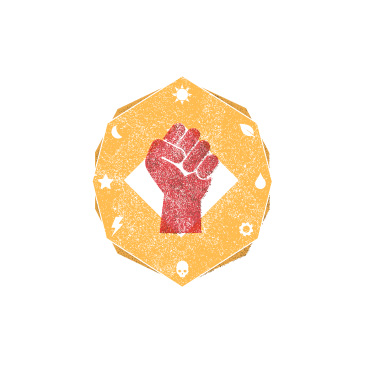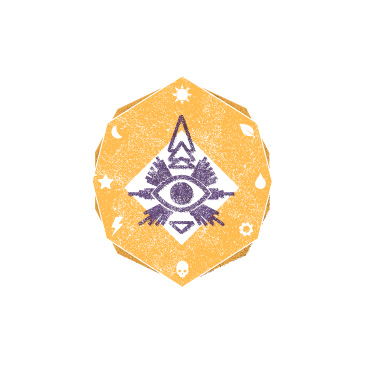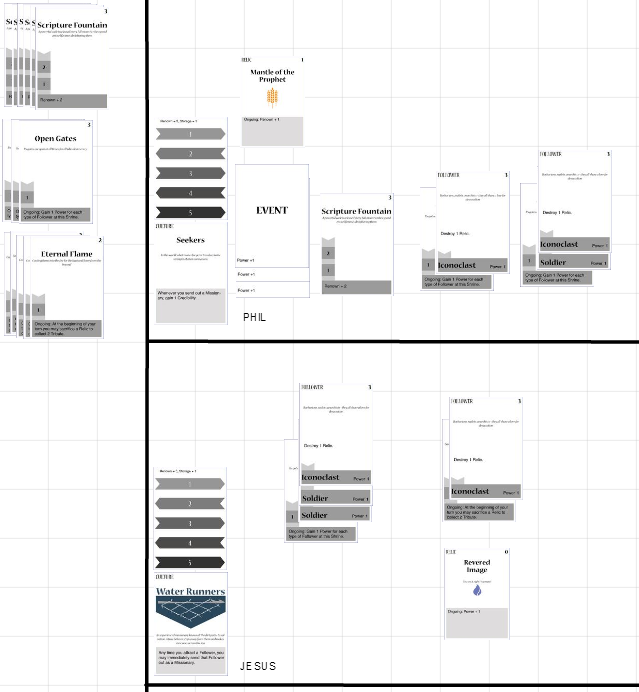Influence Card Art
An art post has been a long time coming – so here’s a peek into what I’ve been working on lately.
There’s a lot going on in the world of our game, but I like to keep the art a little more on the simple side. To fit our theme, I felt we should add a lot of texture to the cards, and keep the images rather simple but colorful, and full of symbolism.
The cards below are all for the influence pile. All the idea cards fall into the categories of “Favor,” “Faith” or “Zealotry.” Since there will be a lot of idea cards, we’re going to use a consistent background for each to quickly visually identify that it is an idea card, and then vary the symbol used in the center of the card to quickly determine which category the idea falls into.
Favor:

Faith:

Zealotry:

Another card that will share the same visual characteristics of the above three is the prophecy card. This symbol was a lot of fun to create – I drew on traditional symbolism used to represent a prophecy, as well as native imagery such as the Nazca Lines.
Prophecy:

I’d like to work on the texture a bit more – it’s a challenge to create a texture that’s visible on a small image.
Most of the icons I used came from The Noun Project. This is a fantastic resource for icons of virtually any noun you can think of. In the future I’d like to customize our symbols a little more, but The Noun Project was a great resource that helped me pull this together quicker than if I had created each icon myself. Perfect for getting great art ready for future play-tests!

